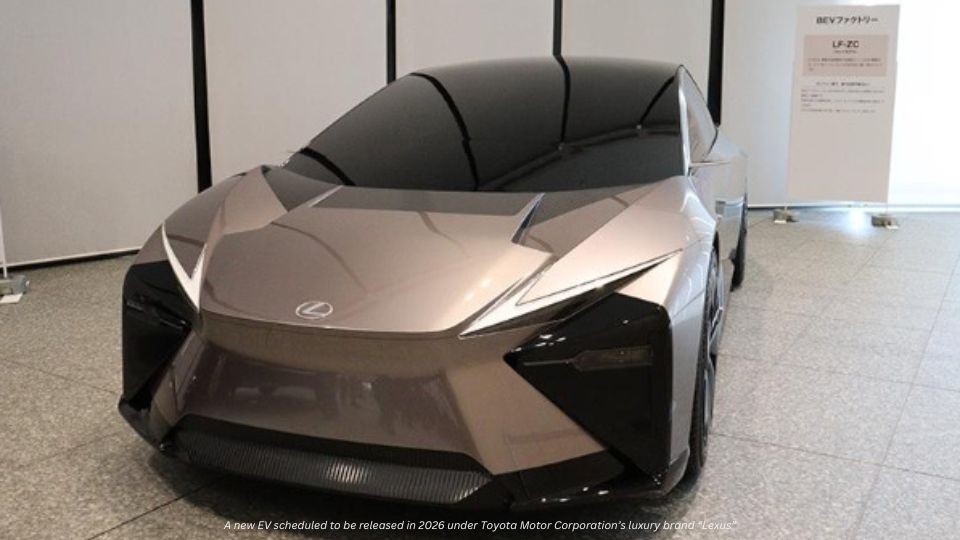
Toyota Posts Record Profits as Hybrid Car Sales Surge in North America, Japan, and China
Toyota achieved record profits in fiscal year 2023 due to stable new car sales, particularly hybrid vehicles, in North America, Europe, and Japan. Continuous product improvements and cost reductions, along with increased production after resolving semiconductor shortages, contributed to this success. Operating income in North America and Europe saw significant growth. Global sales of hybrid vehicles for the Toyota and Lexus brands reached 3,594,000 units, an increase of 32.1%.
Japan, May 9, 2024 - The financial results for the fiscal year ending March 2024 clearly demonstrate Toyota Motor Corporation’s growing earning power. Against the backdrop of a favorable business environment, the company’s structural reforms, including strengthening its product appeal, were successful. The fiscal year ending March 31, 2025, is positioned as “solidifying our footing,” with a focus on “creating surplus capacity” on-site from development to production and sales. Toyota will distribute profits to the supply chain, including its suppliers, and rebuild a system to continue achieving good performance in the future.
Improvements in Product Appeal and Cost Efficiency Yield Positive Results
“We were able to deliver a large number of cars to our customers. Management centered around products and the business foundation we have built over many years have yielded good results. The efforts of many people involved have borne fruit in many ways,” said Toyota President Tsuneharu Sato at a press conference in Tokyo on the 8th, reflecting on the company’s record-breaking financial results.
The company’s high profitability is supported by steady sales of new vehicles, including its mainstay hybrid vehicles (HVs), and efforts to improve product appeal and reduce costs, which have been ongoing for more than ten years. In the fiscal year ending March 31, 2024, production constraints such as the semiconductor shortage were resolved, and production remained at a high level. As a result, sales volume increased in North America, Europe, and Japan, where demand is strong, leading to an increase in operating income. Operating income in North America for the fiscal year ending March 2024 was 524.9 billion yen, 7.0 times higher than the previous year, and in Europe, it was 407.9 billion yen, 7.2 times higher than the previous year.
In the fiscal year ending March 2024, Toyota’s global sales volume increased by about 1 million units compared to the previous year, and “900,000 of these were HVs,” said Vice President Yoichi Miyazaki. The rate of increase is particularly high in North America, Japan, and China. The inventory days for HVs in North America are about half to one-third that of internal combustion engine vehicles, and “they are recognized not only for their environmental performance but also as attractive cars,” explained Vice President Miyazaki.

Another factor contributing to the growth in operating income is that customers in all regions have accepted the price hikes due to improved product appeal. In the fiscal year ending March 2024, 2 trillion yen was recorded as “sales efforts.” The company has been able to offer high-margin cars such as sports utility vehicles (SUVs) and the luxury car brand Lexus due to increased unit volume and price increases, as well as the lifting of semiconductor production restrictions.
On the other hand, sales competition for electric vehicles (EVs) and other products is intensifying in China, leading to what appears to be a price war (according to an industry source). Toyota maintains sales at the same level as the previous year due to its policy of “not getting caught up in price competition” (Vice President Miyazaki). “We have secured a share in the Asian market, including China,” he said.

Additionally, the depreciation of the yen contributed to an increase in profits by 685 billion yen. There was a 265 billion yen decrease in profit due to soaring material prices, but this was offset by a 385 billion yen cost improvement effect, the highest level ever.
Efficient Allocation of Profits and Strategic Investments
Another important factor is how efficiently profits generated from HVs and plug-in hybrid vehicles (PHEVs) can be allocated to new areas such as electrification. Although the wave of overheated conversion has subsided, EV sales trends are still attracting attention. In the fiscal year ending March 2024, sales reached 117,000 units. The number is expected to reach 171,000 units in 2025.
This term, we will “strengthen our footing” by investing in people and creating surplus capacity on-site. The source of Toyota’s strength is its world-class sales base with sales of more than 10 million vehicles, and the fact that the sales ratio in each region is dispersed at approximately 10-30%, ensuring no bias in any particular region. This strength was demonstrated in the fiscal year ending March 2024, leading to strong results. On the other hand, the successive introduction of new car models, the daily production of more than 14,500 vehicles in Japan, and the response to new fields such as electrification have placed a strain on the development and production departments. President Sato says, “Corporate management is a long-distance race, but it had become a short-distance race.”
Recognizing the limits of the current structure to continue further growth, the company will use the year ending in March 2025 to solidify its footing. In addition to creating time and human capital to carry out improvement activities from a medium- to long-term perspective on-site and creating surplus capacity, we will work with suppliers and dealers to “invest in people.”
First, Toyota will spend the past year working to ensure time and psychological safety, not only at production sites but also in development and management departments. Identify the “unreasonableness” in work and promote the creation of surplus capacity. At production sites, we will freeze productivity goals for a year while taking on the challenge of creating new indicators. President Sato says, “We are creating the work style of 10 years from now,” and plans to create an environment that thoroughly ensures safety and quality. In the automobile industry, which is at a turning point such as electrification, many tasks are a series of challenges, and the company will rebuild its system to one that can tolerate change and failure.
In the fiscal year ending March 2025, we secured 380 billion yen for investment in people. Of this amount, 300 billion yen will be recorded as expenses for suppliers and others. In addition to the soaring costs of energy and material, suppliers can now reflect in their procurement prices the investment in people, including improving the work environment and working styles. Dealers will also receive a subsidy of 10,000 yen per employee to invest in their people. The company will support each retailer to increase their motivation to work and their competitiveness by improving working conditions and enhancing the store environment.
Strength in Providing a Variety of Drive Devices
With the urgent need to achieve carbon neutrality (virtually zero greenhouse gas emissions), the key is an electrification strategy. EV sales have been increasing in Europe, North America, China, and other countries thanks to government incentives, but sales have stalled due to intensifying price competition and economic slowdown. The growth of business results of major EV companies such as US Tesla and China’s BYD is slowing.
Meanwhile, demand for HVs and PHEVs is growing on a global scale, and Toyota’s “multi-pathway” (omnidirectional strategy), in which it provides powertrains (drive devices) tailored to local energy conditions, stands out as a strength.
Global sales of Toyota and Lexus brand HVs in the fiscal year ending March 2024 were 3,594,000 units, an increase of 32.1% from the previous period. Electric vehicle sales, including PHEVs and EVs, totaled 3,855,000 units, 37.4% of the total, an increase of 7.8 points from the previous quarter. In the fiscal year ending March 2025, sales of electric vehicles are expected to reach 4,827,000 units, or 46.4% of the total, due to growth in HVs.

Additionally, along with the realization of multi-pathways, a key theme for this term is the creation of a foundation for “Software Defined Vehicles (SDV),” which increases the value of cars by updating software. The company will focus on the development of software infrastructure such as the in-vehicle basic software (OS) “Aleen” and expand investments related to artificial intelligence (AI). The company’s policy is to “promote structural reform so that the automobile industry can transform into a ‘mobility industry’ by collaborating with infrastructure, applications, and services that are closely related to daily life” (President Sato).






